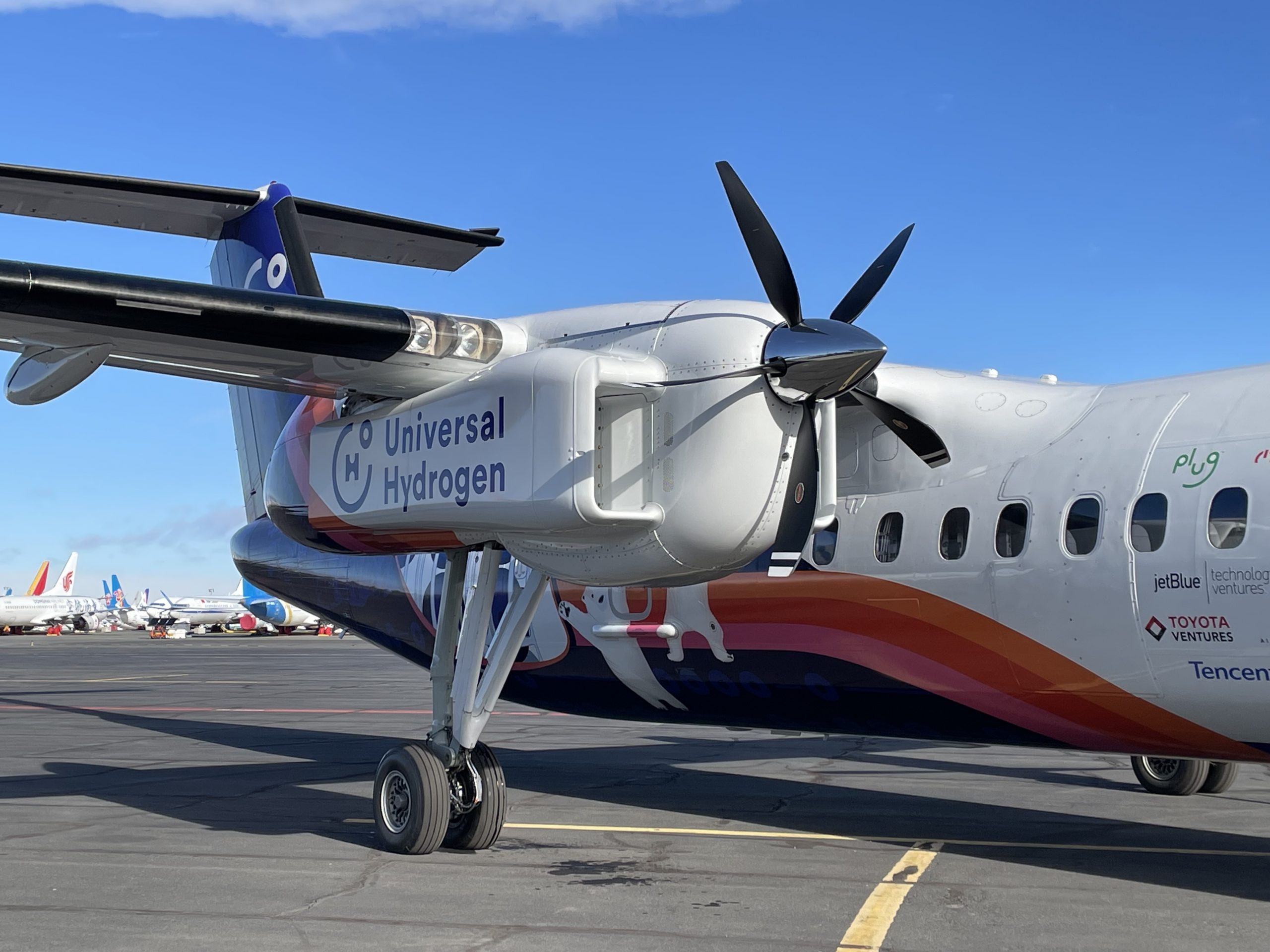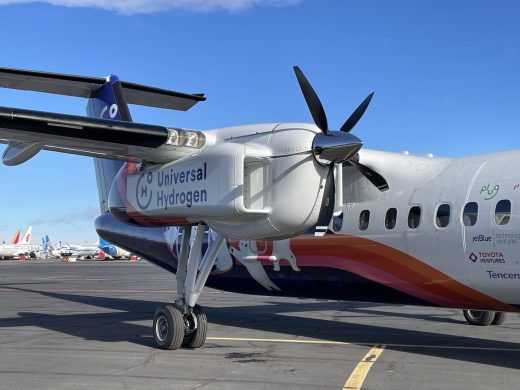A Dash-8 commuter plane flew for 15 minutes with a hydrogen fuel-cell engine
Airbus is building a hydrogen fuel-cell engine for aircraft
As part of its goal to have zero-emission aircraft enter service by 2035, Airbus has announced the development of a hydrogen fuel-cell engine designed for airplanes. Unlike Rolls-Royce’s recently announced jet engine that burns hydrogen directly, it would use an electric motor just like fuel-cell cars, while emitting only H20. It could eventually be employed in commercial aircraft that could carry up to 100 passengers around 1,000 nautical miles (1,150 miles), the company said.
Airbus plans to test the engine by the middle of the decade on its A380 MSN1 aircraft, “currently being modified to carry liquid hydrogen tanks,” it said. However, the technology appears to be designed for smaller, regional type aircraft that use more efficient propeller, rather than jet engines.
“Fuel cells are a potential solution to help us achieve our zero-emission ambition and we are focused on developing and testing this technology to understand if it is feasible and viable for a 2035 entry-into-service of a zero-emission aircraft,” said Airbus VP for zero-emission aircraft, Glenn Llewellyn.
The company didn’t provide any more details, but fuel-cells are a well-known technology for cars. They’re far less efficient than battery electric vehicles (BEVs) if you count fuel production and conversion to electricity. However, they have more range, are faster to refuel and lighter — with the latter, of course, being essential for aircraft.
As mentioned, Rolls-Royce just announced the successful test of a jet engine powered by burning hydrogen directly, another possible technology for future air transport. The company converted a Rolls-Royce AE 2100-A, a regional aircraft engine used in turboprop commuter planes, to work with the novel fuel source. However, the tech could theoretically be scaled up for larger planes.
There are still some major hurdles to overcome before hydrogen could ever be used to power airplanes. It takes four times as much hydrogen as regular fuel by weight for the same range, and the fuel must be kept under pressure. And of course, hydrogen is highly explosive, so aircraft systems for storage and distribution would need to be extremely reliable and durable — again adding weight. Still, it might be the only option available for aircraft in the near future, as battery technology is still much too heavy unless used for very short flights.

(25)



